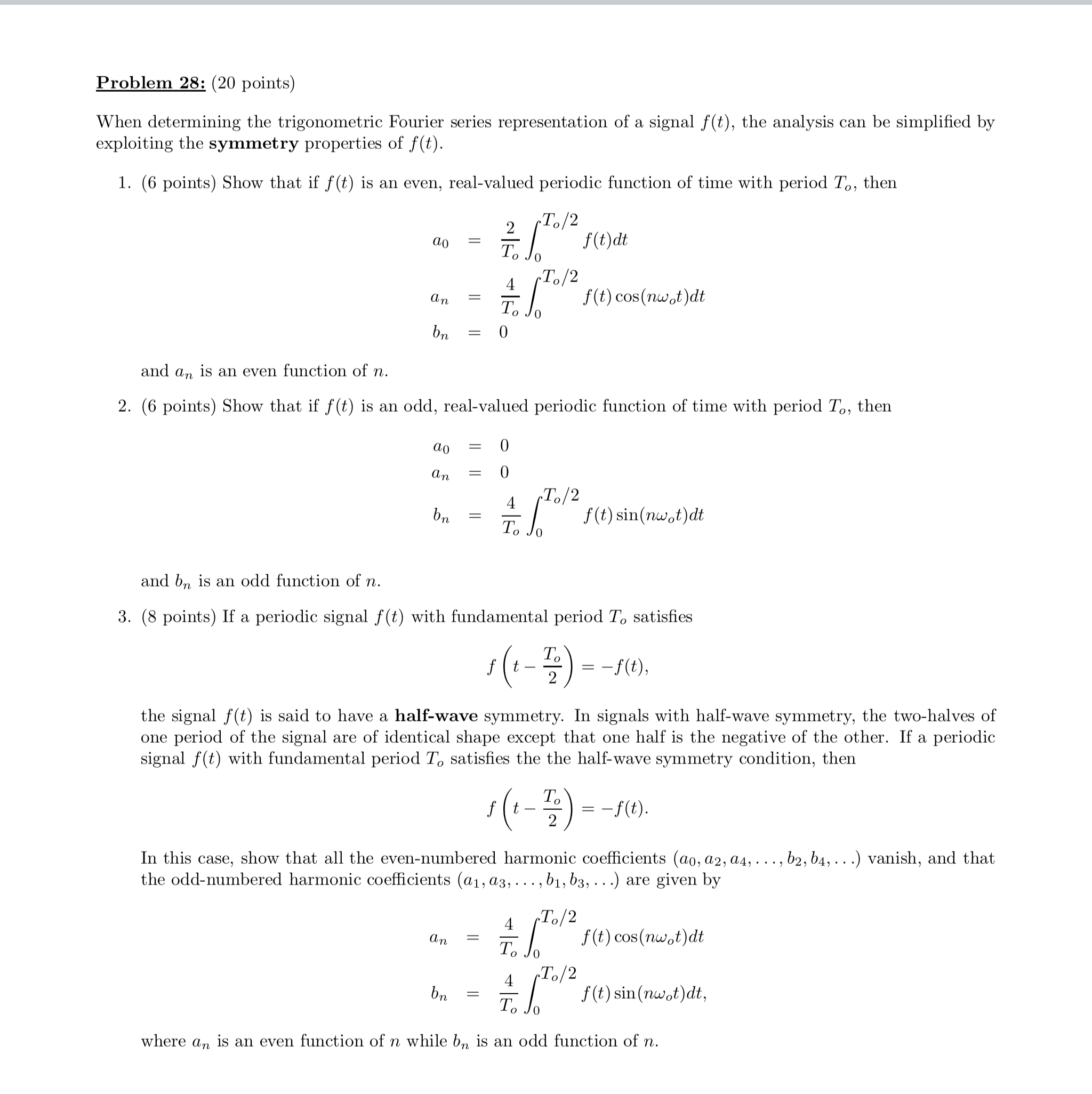Home /
Expert Answers /
Electrical Engineering /
when-determining-the-trigonometric-fourier-series-representation-of-a-signal-f-t-the-analysis-can-pa736
(Solved): When determining the trigonometric Fourier series representation of a signal f(t), the analysis can ...

When determining the trigonometric Fourier series representation of a signal , the analysis can be simplified by exploiting the symmetry properties of . 1. (6 points) Show that if is an even, real-valued periodic function of time with period , then and is an even function of . 2. (6 points) Show that if is an odd, real-valued periodic function of time with period , then and is an odd function of . 3. (8 points) If a periodic signal with fundamental period satisfies the signal is said to have a half-wave symmetry. In signals with half-wave symmetry, the two-halves of one period of the signal are of identical shape except that one half is the negative of the other. If a periodic signal with fundamental period satisfies the the half-wave symmetry condition, then In this case, show that all the even-numbered harmonic coefficients vanish, and that the odd-numbered harmonic coefficients are given by where is an even function of while is an odd function of .